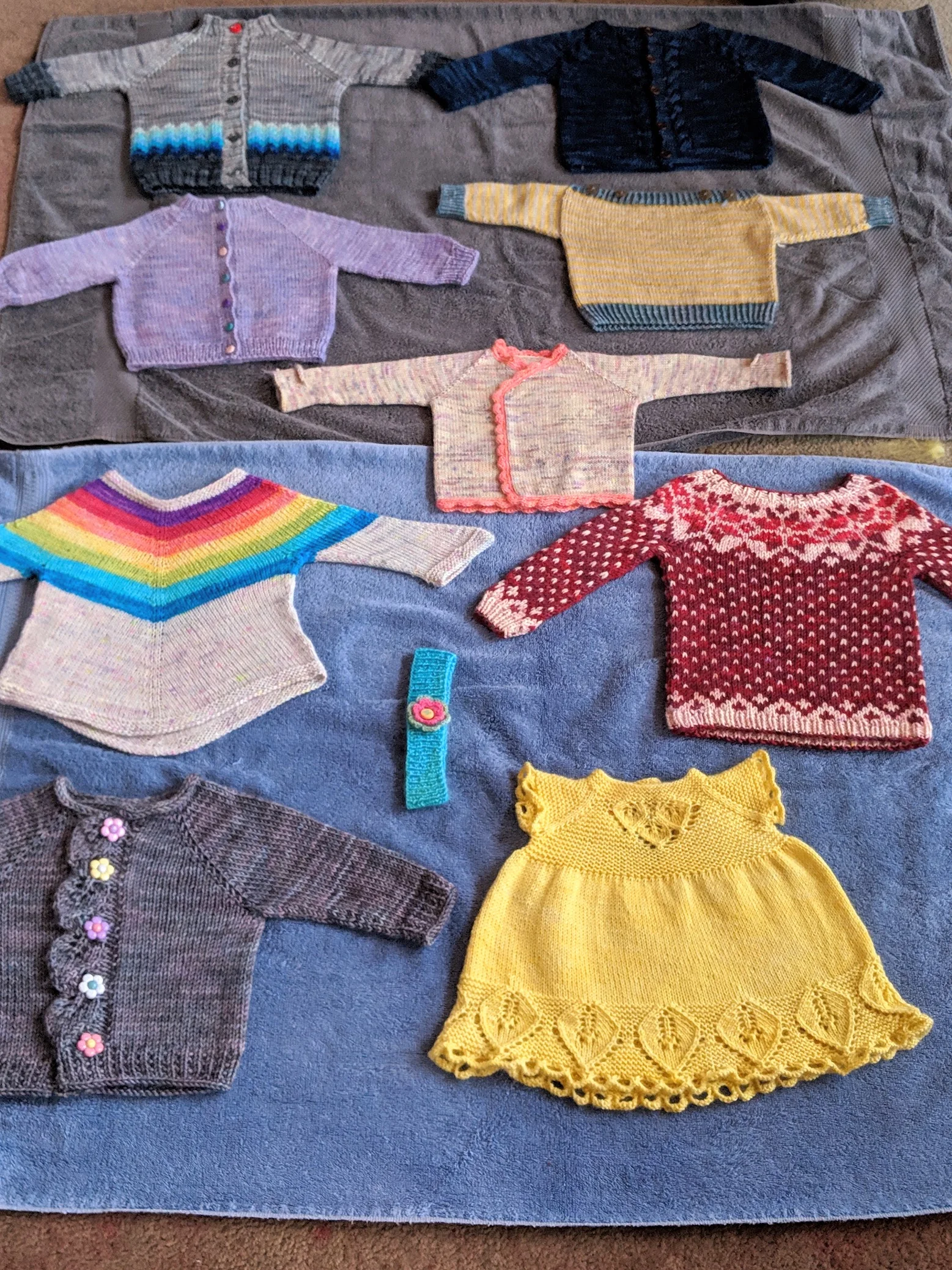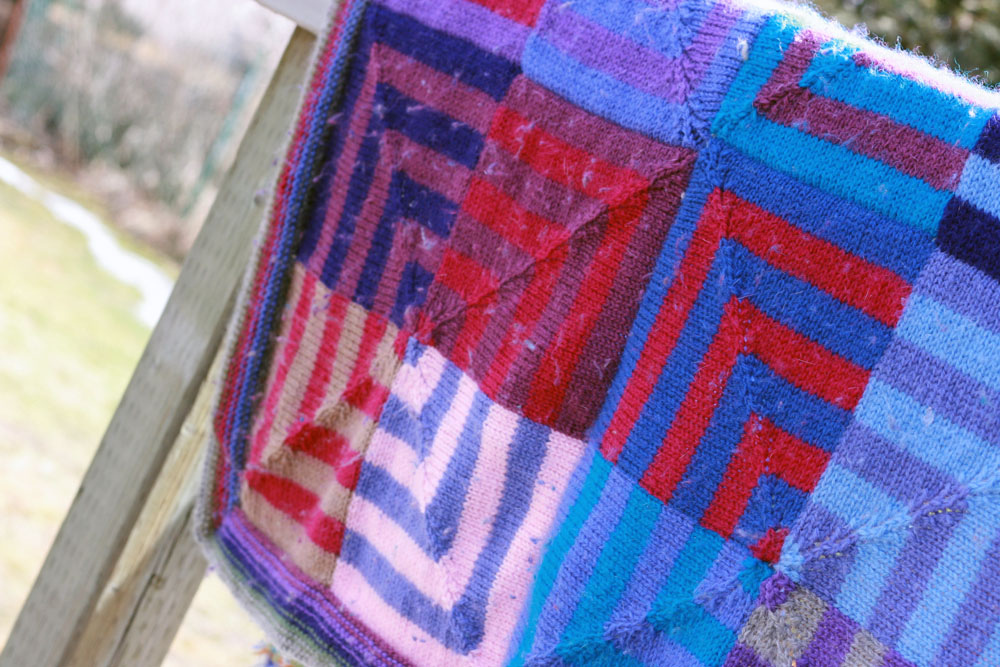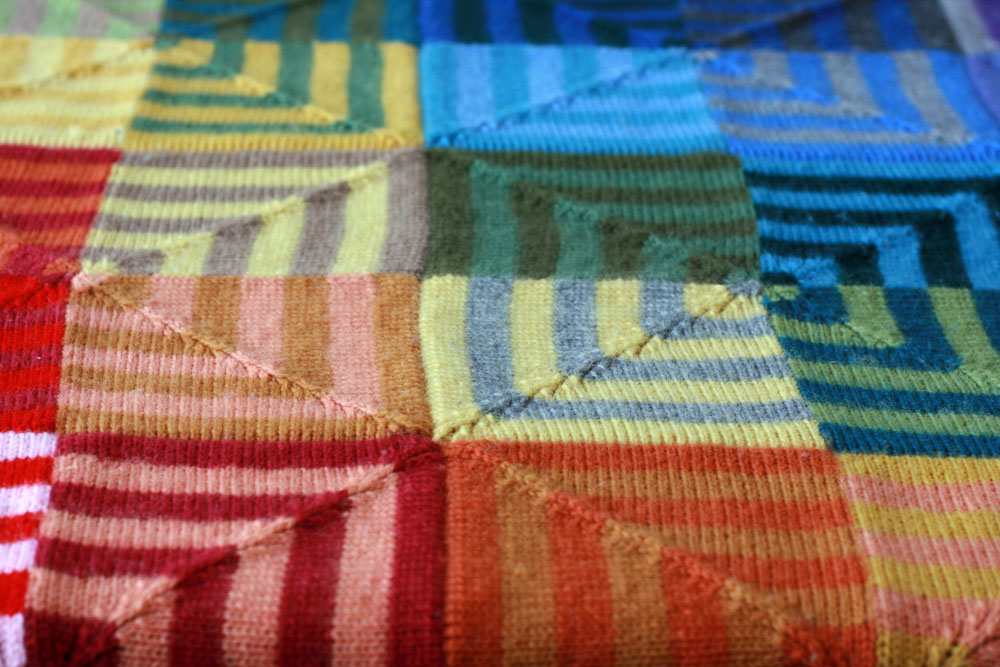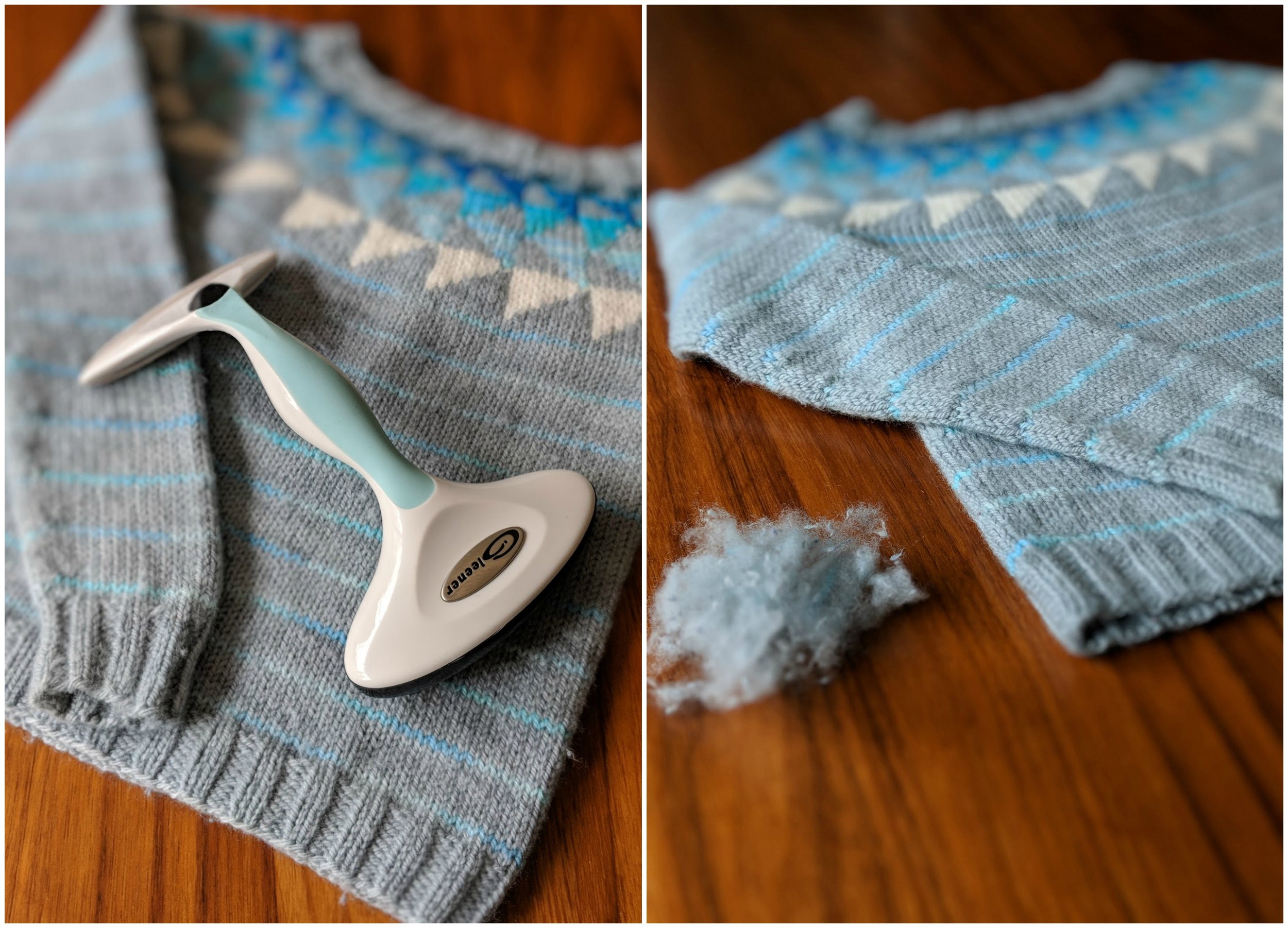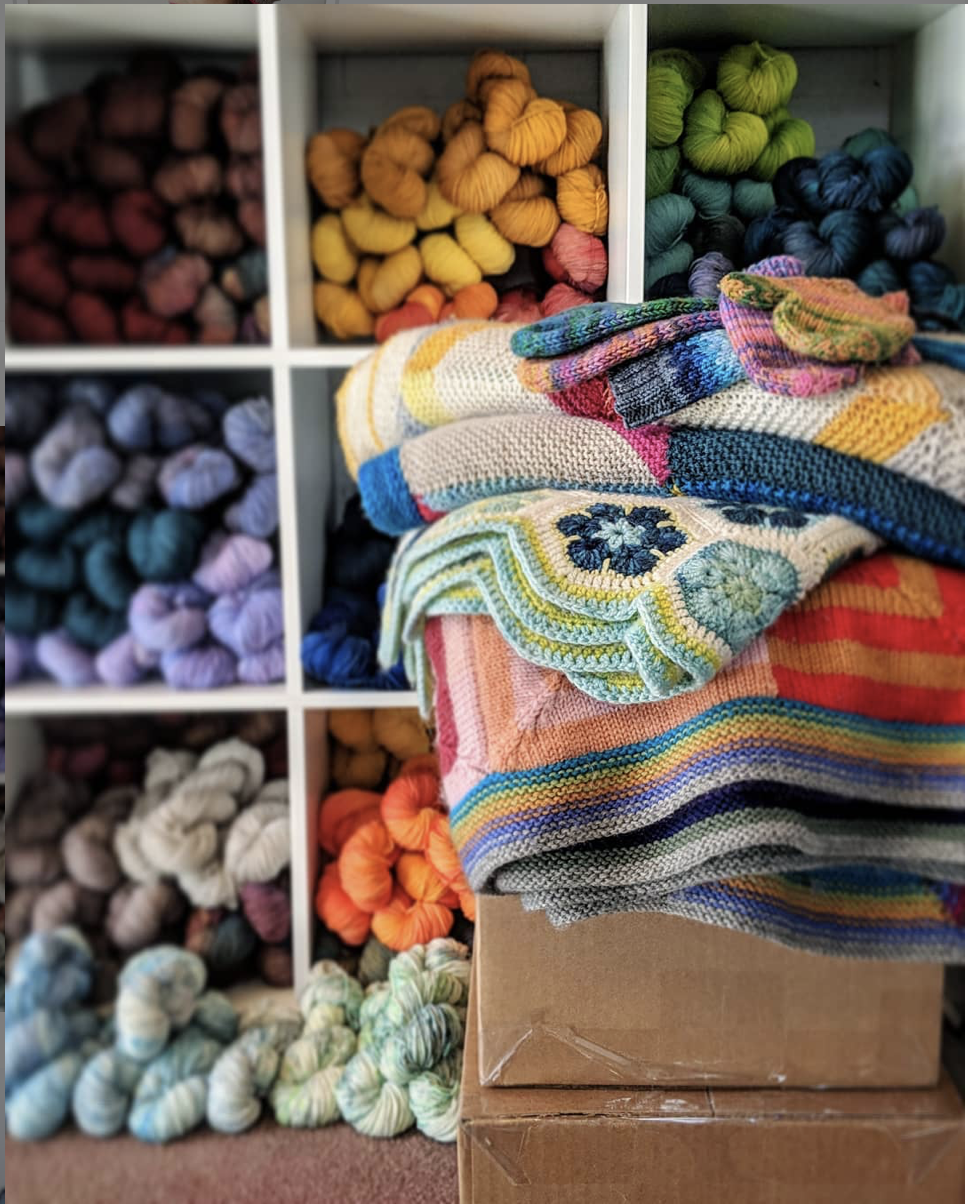This is a long awaited post about how exactly I go about washing all my hand knits. There are a few disclaimers I have to put out there before I get into it:
1) No matter what kind of yarn you’re knitting with (superwash, PureWash, natural untreated…) I’m a firm believer that all hand knits should be laid flat to dry. Period. I don’t put any of my knits in the dryer and the main reason is because dryers are hard on fabrics, all fabrics. Here’s a little laundry anecdote for you: my sister and I purchased the same t-shirt at the same time. It was a nice cotton tee, nothing fancy, easily washable. I threw mine in the washer and dryer every time it needed it, but my sister lived in an apartment where she had a washing machine that only had cold water and no dryer, so her t-shirt got washed in a cold cycle and hung to dry. I bet you can guess where I’m going with this. Fast forward a few months of regular wearing and washing and my t-shirt looked dull and old and hers looked bright and as good as the day she(we) bought it. Lesson learnt. I only ever wash in cold water now. I line dry in the summer and use my dryer in the winter but anything special gets left out of the dryer because it really makes all the difference! So if that’s true for a cotton t-shirt, it’s 100 times more true for hand knits.
2) My system may not work for everyone simply because maybe your washing machine isn’t the same as mine. I’ll get into the washing machine details next but my delicate/knits cycle may be more delicate than yours and you should test a swatch before throwing in a full garment. Another reason why knitting a swatch is always a good idea!
3) I’m focussing on sweaters, hats and mitts here. Things like lace shawls that require proper blocking are treated slightly differently which I’ve previously blogged about here.
4) Superwash yarns have a tendency to grow when wet and I might break my no dryer rule occasionally if I find that a garment has stretched so far out of shape that it’s no longer working for me. I have, on occasion, put a completely dry superwash sweater in a hot dryer for 5 minute increments to fluff it up and tighten up the stitches. It’s not my favourite thing to do and avoiding this stretching is one of the reasons I developed our line of PureWash yarns.
Before we dive too deep into the exciting world of washing your knits I want to mention how infrequently I wash most of mine. This is not something that happens weekly in my house, not even monthly. Wool garments don’t absorb odours and dirt as easily as cotton items do. They are typically an outer layer and are worn over a t-shirt or tank which get washed more frequently. My kids wear knits all the time and though I’m not overly precious with them (my 5 and 3 years olds wear them to school and daycare where I have no control over what happens to them) I do simple things like take a sweater off of my 3 year old before serving him a bowl of spaghetti or, say, finger painting. Other than that they wear their hand knits the same way they would wear a store bought sweatshirt.
When an item looks like it’s ready for the wash I set it aside and typically wait until I have enough hand knits to run a load in my machine. Because we have tons of hand knits to choose from I can do that, if I didn’t have as many knits and didn’t want one to be out of rotation while I wait for a load to accumulate I would hand wash it. If something is accidentally dirtied in a way that I feel needs to be addressed right away, or if there’s a favourite item that I want to be able to reach for right away, I skip the machine and go straight to the hand washing.
Hand Wash Method:
If I’m hand washing an adult sweater I do it in the sink. If it’s a smaller item I’ll use a bowl. I fill the sink/bowl with cold water, pour in some wool wash, let it sit for 20 minutes/several hours if I forget about it. Squeeze out the excess water and then lay it flat to dry on a towel. For adult sweaters I will have Chris squeeze out the excess water because it can be a bit of a chore and then I’ll lay it on a towel, roll it up and step on it to get more water out of it before laying it flat. Garments get carefully reshaped so they dry nicely, accessories or things that don’t need as much reshaping just get tossed on a drying rack. I lay them on towels on the floor in my office. I typically do it in the evening and they are usually dry by the morning. Sometimes I’ll put smaller items like hats or mitts on a cooling rack (like what you would use for cookies) to allow for more air circulation, but sweaters go directly on the floor because I don’t have anywhere else to put them.
Full disclosure: I have a spin dryer that we use for the yarn and I use it to remove the water from garments too. It’s so much easier than the squeezing/standing on a wrapped up towel system and gets them so close to dry but I wouldn’t buy one just for sweater care.
Machine Method:
If I’ve got a bunch of knits to wash I’ll do them all in one load in my machine and I do think that not only is it quicker/easier, the items seem to get cleaner, however it is definitely harder on them so that’s something to consider. All I do is set my top loading machine to the delicate/knits cycle, cold water, add in a little less than I would usually use of my regular laundry detergent (we use an eco-friendly scent-free/dye-free variety, something really gentle on the clothes) and let the machine do all the work. I put it through the whole cycle and then lay them to dry the same way as the items I’ve hand washed. They do come out of the washing machine looking a little worse than items I hand wash, but once they’re dry and I’ve given them the once over with my Gleener they look as good as new.
All the kids clothes in the top photo and the photo below were washed using my machine method.
For things like the kids knit mittens and hats I actually prefer to hand wash only because I’m usually in a rush for them. They come home in the afternoon after having dipped their mitts in slushy puddles and I want them washed and dried in time for them to wear to school the next morning so I put them all in a bowl with some wool wash on the counter, I’ll probably end up changing the water once or twice because children are filthy and then I’ll put them on the drying wracks overnight. I can do it in less time than it takes to wash the dishes. In fact I’m often doing both simultaneously. It’s no biggie.
Regardless of how I’ve washed the items, they always get Gleened before they are folded and put back into rotation.
The blanket above is the best example I can find to show just how awesome at defuzzing the Gleener is. This blanket is knit from non-washable wool but I washed it using my machine wash method and though it looked pretty awful when it came out of the washer (just covered in pills) I gleened it and it looked better than ever. Those photos above are from years ago, that blanket was the first thing I’d ever gleened and it sold me on the tool completely. You can see the same blanket on the bottom of the pile of blankets below. The photo below was taken yesterday after I washed the 4 blankets shown using the machine wash method. The hat and mitts on top of the pile were hand washed.
Above is a sweater knit in our PureWash DK Weight base that accidentally got put in a regular wash with a load of laundry. Luckily I caught it before it got tossed in the dryer. I laid it flat to dry and then gave it a good once over with my Gleener and it came out as good as new! While I wouldn’t recommend that method of washing it is nice to know what our PureWash yarns can stand up to the abuse if it happens. I have washed and dried swatches of all of our PureWash bases and they have all made it through the process exceptionally well - they look like they’ve never been washed - but I still wouldn’t recommend you wash your knits that way. They will survive but we want our knits to THRIVE for years and years!
And one last honourable mention in the “laundering your knits” category goes to my steam iron. My iron does not see very regular use but every once in a while I will put the steam on high and run the iron lightly over a knit to and it makes a world of difference. If I’m being completely honest, I have been known to skip the wash and just give a sweater the once over with a Gleener and a steam iron and it can really breathe new life into it.
The Christmas In July sweater Willow is wearing in the above photo has been worn by all three of my kids over the past 5 years or so. Lots of wear, lots of washes and it still looks great. Because or the time and expense involved in hand knitting I think taking good care of the things we make is so important. So many people think hand washing is an insanely time consuming and labour intensive task but it’s really not. It’s nothing to be afraid of. You know what is an insanely time consuming and labour intensive task? Knitting! All that time and energy you devoted to your work means that your gorgeous hand knits need to be treated with respect. So let’s do that. Let’s wear them and enjoy them everyday and then care for them respectfully when laundry day rolls around.
If I’ve missed something or if you have a tip or trick that you do when washing your hand knits please let me know in the comments!


